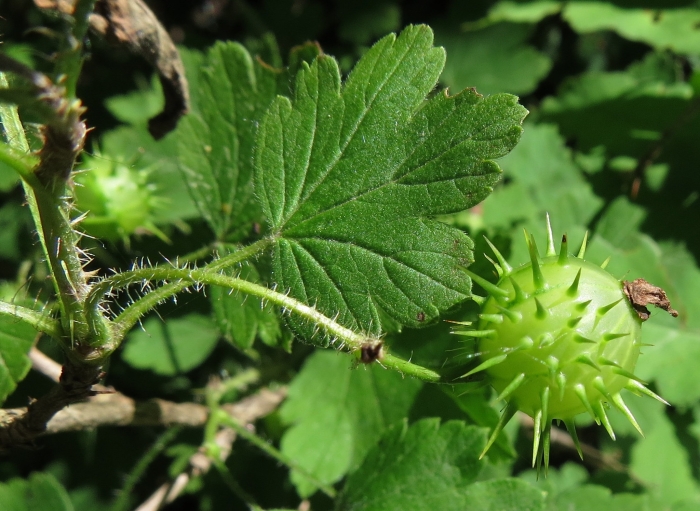Eastern Prickly Gooseberry
(Ribes cynosbati)
Eastern Prickly Gooseberry (Ribes cynosbati)
/
/

Adam Kranz
Public Domain


















































Estimated Native Range
Summary
Eastern Prickly Gooseberry is valued for its wildlife benefits, as the fruits provide food for birds and mammals. It is suitable for naturalistic plantings and can be used in native plant gardens or as part of a mixed shrub border. This shrub is relatively low-maintenance, tolerating a range of soil conditions, but it prefers moist, well-drained soils and can grow in full sun to part shade. While it is not commonly found in the nursery trade, it can be propagated by seeds or cuttings. Gardeners should be cautious of the plant’s sharp thorns when handling. Potential problems include mildew and leaf spot diseases, and the plant can be a host for white pine blister rust, so it should not be planted near susceptible pine species.CC BY-SA 4.0
Plant Description
- Plant Type: Shrub
- Height: 2-4 feet
- Width: 1-2 feet
- Growth Rate: Moderate
- Flower Color: N/A
- Flowering Season: Spring
- Leaf Retention: Deciduous
Growth Requirements
- Sun: Full Sun, Part Shade
- Water: Medium
- Drainage: Slow, Medium, Fast
Common Uses
Bee Garden, Bird Garden, Butterfly Garden, Deer Resistant, Edible*Disclaimer: Easyscape's listed plant edibility is for informational use. Always verify the safety and proper identification of any plant before consumption., Fragrant, Hummingbird Garden, Low Maintenance, Rabbit Resistant
Natural Habitat
Understory of deciduous forests, often found along forest edges and stream banks
Other Names
Common Names: American Gooseberry, Pasture Gooseberry, Prickly Gooseberry, Dogberry, Dogbramble, Hunds-Stachelbeere, Hagebutten-Stachelbeere, Groseillier Des Chiens, Groseillier Piquant, Groseillier Ronce De Chien, Groseillier-Ronce Des Chiens
Scientific Names: , Ribes cynosbati, Ribes cynosbati var. cynosbati, Grossularia cynosbati, Ribes cynosbati var. atrox, Ribes cynosbati f. inerme, Ribes cynosbati var. glabratum, Ribes huronense, Ribes cynosbati f. cynosbati, Grossularia cynosbati var. inermis
GBIF Accepted Name: Ribes cynosbati L.